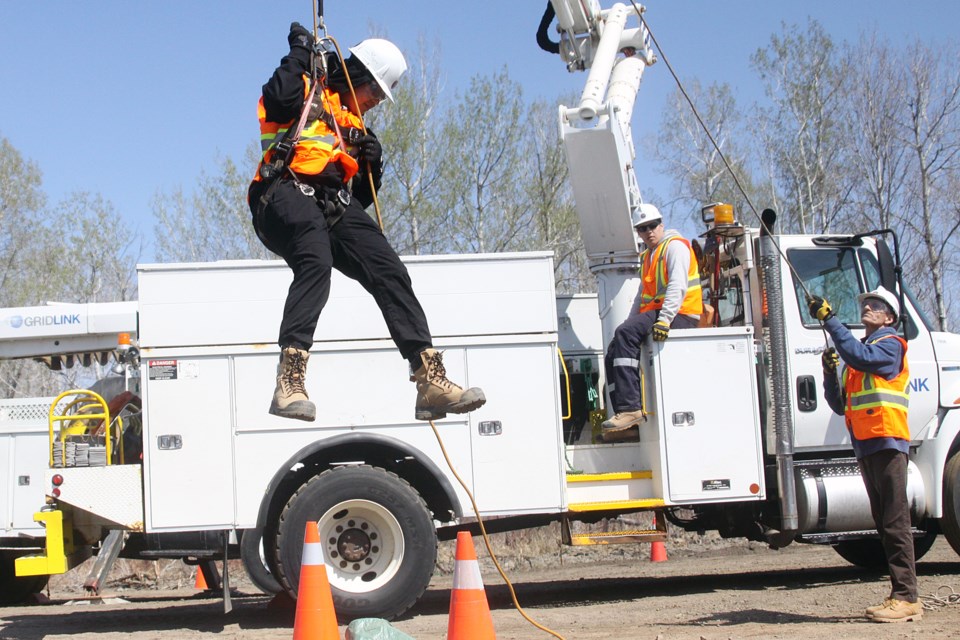THUNDER BAY – Funding commitments have been secured for the largest Indigenous-led electrical transmission project in Canadian history but now efforts to get workers ready to build the lines are gaining momentum.
Wataynikaneyap Power on Thursday officially announced the launch of a training program to prepare community members with the required skills and abilities for the construction of the five-year project, including a line crew ground support course hosted by the Infrastructure Health and Safety Association at Grid Link in Thunder Bay
The first intake for the 15-week certificate program began last month and currently has 10 participants. The goal is to have 48 people receive training certificates through four offerings of the program from now until August 2019. The program features several safety courses, ladder and safe pole handling, working at heights, mobile crane operator training and specifics on pole line construction.
Wataynikaneyap Power chief executive officer Margaret Kenequanash said starting the training is a major milestone for the project.
“The work we’re doing, a lot of times, we’re talking about what we envision to do and this brings in the reality of what we’re trying to achieve,” Kenequanash said.
The provincial and federal governments earlier this year announced $1.6 billion in funding for the project, which aims to connect 16 First Nations communities to the provincial electrical grid by the end of 2023.
The first phase, which is targeted to be completed by the end of 2020, would upgrade existing transmission infrastructure from Ignace to Pickle Lake. The subsequent phase would extend lines north from Pickle Lake and Red Lake to reach the communities, with in-service dates beginning in 2021 and all communities to be hooked up by the end of 2023.
Construction of the transmission lines is expected to create nearly 770 jobs, of which more than 200 would be based in Northwestern Ontario.
Joel Meekis, originally from Sandy Lake First Nation, is one of the first participants and pursued it after seeing an advertisement.
“I wanted to learn a new skill, have a career and better myself,” Meekis said.
“With this being an Aboriginal-based program, a lot of youth on the reserves will see this and want to hopefully take up a career in this.”
Kenequanash said having community members building and working on the lines will create hope and set the foundation for meaningful employment.
“The concept of ownership and having meaningful involvement and participation in the project that our communities want and creating that hope and opportunity, it’s good to see young people and others want to participate and develop that capacity and get that experience and training to be able to do the work required,” Kenequanash said.
The federal government has provided $2 million through its Skills and Partnership Fund to help develop the training programs.
“This funding is about making sure people have an opportunity to develop skills that will improve their opportunity to get a job. It changes their own outlook on their prospects for the future and not just that but changes for generations to come,” federal Labour Minister Patty Hajdu said.
“We can’t continue to grow as a country or region economically if we don’t ensure each community has an opportunity to participate in major projects.”
